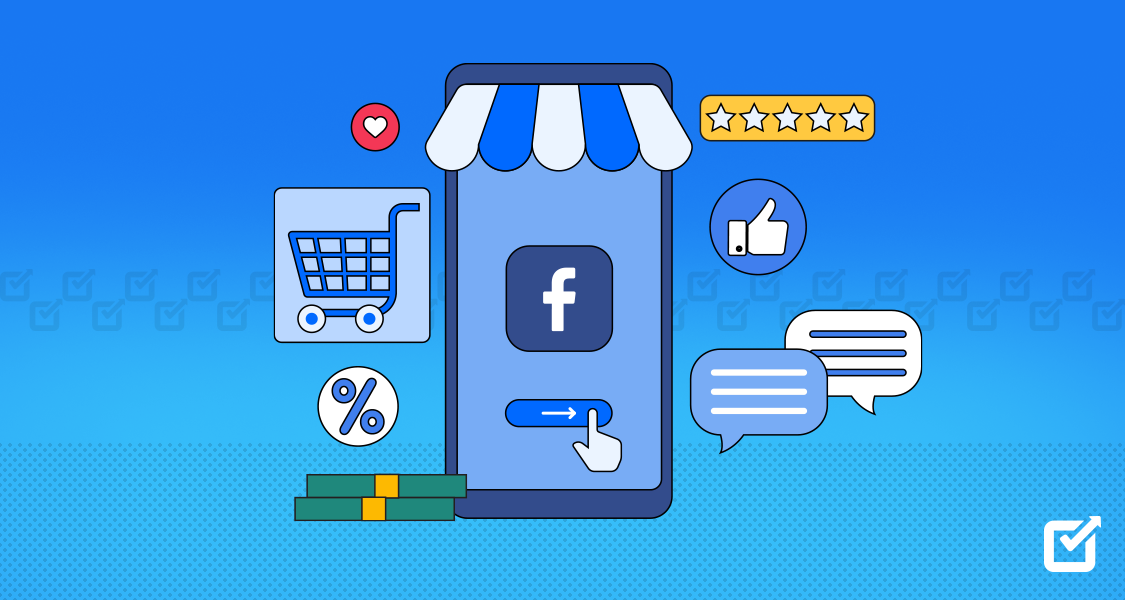Twitter has consistently evolved its platform to cater to the ever-changing needs of its users and developers. A significant milestone in this evolution was the introduction of paid API access tiers, an update that sparked considerable discussions and analyses within the SaaS industry.
In order to explore this topic further, we reached out to notable individuals within the SaaS domain, seeking their invaluable thoughts and insights that involved one simple question:
What impact did the Twitter API changes have on their respective businesses and the SaaS industry as a whole?
We’ve collected and curated the best responses here for your perusal so that perhaps you can delve deeper into this subject
Industry Experts on the Impact of Paid Tiers on Businesses in the SaaS Industry
Farhan Virji
CEO @ Keyhole. co

The introduction of paid API access tiers by Twitter had a considerable impact on our business and the SaaS industry as a whole. While we were already on a paid plan, the new rates forced us to re-evaluate Keyhole’s leverage on Twitter. These new enterprise-level plans had limits that exceeded our needs, making it difficult to justify the cost. On the other hand, the basic $5k plan was too low for a commercial app, indicating a need for a middle-tier option.
The lack of transparency about future pricing and potential API restrictions left us with limited options. Twitter remains a crucial platform for our customers, so we chose to pay the “Twitter Tax” to ensure a consistent service. This allows us to remain consistent with our social listening, analytics & publishing offerings despite monthly or daily changes to Twitter.
Unfortunately, the impact of these changes goes beyond Keyhole and affects small apps and the academic community. Many apps (often not-for-profit) dedicated to sharing information have been pushed out due to the new pricing model. This will have a long-term impact on Twitter’s community and relationships with these groups, including educational institutions, who have added tremendous value to the Twitter community.
Social media companies will closely monitor Twitter’s response and community reactions. If Twitter’s business remains unaffected in the long run, other platforms may consider following suit. They’ll either charge for data access or introduce restrictions on their free APIs for commercial use. Reddit announced its own changes soon after Twitter, and it caused major communities to self-sabotage in protest. We’ll see if Meta’s companies decide to adopt a similar model.
Overall, the Twitter API changes have had a significant impact on Keyhole and the SaaS industry. We must adapt to these changes and closely observe how other social media platforms navigate this new landscape.
——————–
Ranee Zhang
Vice President at Airgram
Twitter’s introduction of paid API tiers initially posed a challenge to our business due to increased operational costs. However, it also brought more reliable data access, improving our service quality. For the SaaS industry, it prompted a shift towards more sustainable, data-oriented business models. We can expect other social media platforms to follow suit, balancing free access with premium tiers to ensure service stability, data availability, and profitability.
——————–
Alex Contes
Co-Founder & SaaS Expert of ReviewGrower
The recent modifications to the Twitter API have significantly impacted both my company and the SaaS sector as a whole. My company can no longer afford to rely entirely on the Twitter API; thus, we are increasing our spending on additional data sources and supporting technology. Adapting to these shifts has been expensive in terms of both time and money spent learning about and creating new methods of problem-solving.
Paid API access tiers, however, have served as a wake-up call to the SaaS industry about the need to prioritize data privacy, availability, and dependability. In order to better safeguard themselves against concerns like API updates or service failures, many SaaS organizations now make sure to have numerous data sources. In addition, your brand’s credibility and your customers’ happiness could take a hit if you don’t effectively handle the different levels of API access. The advent of API access tiers has, therefore, emphasized the need for trustworthy data sources.
——————–
Michael Chen
Growth Director of NOTTA
The Ripple Effect: Paid API Tiers and the SaaS Industry
Twitter’s API changes introduced an initial financial burden but improved data access reliability, enhancing our service quality. It signaled a shift in the SaaS industry towards more stable, data-focused business models. Expect other social media platforms to follow this trend, offering premium tiers to ensure service consistency and generate revenue
——————–
Eva Decker
Marketing Director of Idigic
The introduction of paid API access tiers by Twitter has had a significant impact on businesses and the Software as a Service (SaaS) industry as a whole. For other social media platforms, it’s possible that we may see similar shifts toward paid API access tiers. Twitter’s decision to monetize its API reflects a broader trend among social media platforms to find additional revenue streams. Facebook, for instance, has already implemented restrictions and changes to its API access in recent years, requiring businesses to undergo a review process to access certain data and functionalities. This move towards more controlled and monetized API access may become more prevalent among social media platforms as they seek to balance the value they provide to businesses with their own financial interests.
——————–
Ovidiu Cical
CEO & Co-founder at Cyscale
The modifications to the Twitter API significantly impacted businesses and the SaaS sector as a whole. One noteworthy effect was the upheaval it brought about to systems for social media analytics and management. Many companies widely utilized these technologies to plan tweets, track interactions, and analyze data for marketing campaigns. The API modifications limited access to specific features and data, which reduced the utility of these products. Due to this, firms have to change their approaches or discover new solutions. Developers were forced to redesign their apps and come up with workarounds to assure continuous operation, which put the SaaS sector’s reliance on APIs for integration and data exchange at risk. This highlighted how crucial stable and predictable APIs are for SaaS.
——————–
Abner Miller
Founder at Starlinkhow
Recently, I’ve been trying out a few different methods for delving into my Twitter stats. However, since the latest API price increase, I’ve seen some volatility in the market. In response to the rising costs, some tools have genuinely increased their pricing, while others have eliminated some functionality or gone out of business entirely. It won’t be long, though, before new analytics tools emerge or existing ones evolve to meet the needs of their customers better.
——————–
Fabian Maume
Founder of Tetriz.i

Twitter API changes are actually a good thing for me. A big part of my actually is consulting about web scraping with tools like Phantombuster. By making their API paid, Twitter is making web scraping automation more appealing.
——————–
Josh Pelletier
Chief Marketing Officer of BarBend
Twitter analytics tools are familiar to me as a social media analyst. Engagement metrics, audience demographics, and content performance are crucial to a successful social media strategy. Twitter analytics users are concerned about the API pricing hike. These tools collect data and deliver services using the Twitter API. The price surge has pushed numerous suppliers to rethink their pricing or possibly cancel their offerings. When the API fee raise was announced, we worried about its impact on our preferred analytics tools. We asked our tools’ support teams about any service or pricing adjustments.
——————–
Ilia Mundut
Founder & CEO HeftyBerry
I can confidently say that the Twitter API changes had a significant impact on businesses across various industries. The introduction of paid API access tiers created a new revenue stream for Twitter while also limiting extensive data access to only paying customers. This meant that smaller companies with limited funding were at a disadvantage as they could not afford the premium pricing and missed out on valuable information.
However, this move towards paid API access is not unique to Twitter, and we can expect other social media platforms to follow suit in the future. It is important for businesses to adapt their strategies accordingly and invest in resources that provide them with meaningful insights into customer behavior.
Overall, while these changes may have initially caused disruptions within our industry, it has forced us t re-evaluate our approach and prioritize investment in high-quality data sources rather than relying solely on social media platforms. Ultimately, those who are willing to evolve along with these changes will be better positioned for success in an increasingly competitive landscape.
——————–
Matt Haycox
Founder and CEO of Funding Guru
Twitter has started charging money for something that was once free. This is like a special key that lets developers use Twitter’s data for their work. This has upset quite a few people, especially those who are working
on small projects or startups and don’t have a lot of money.
Regular Twitter users won’t see much of a difference right now, but it might affect some businesses. Especially if they use tools that need that special key (API) to work properly with Twitter. If those tools can’t afford the new cost, businesses might need to find alternatives.
Smaller businesses have been hit hardest because the bigger ones can handle the new costs. For businesses that rely a lot on what’s trending on Twitter, they may need to find new ways to get that information.
Some businesses might also face problems with scheduling tweets or getting analytics. This could change how they talk to their audience and what they talk about. They might also need to find new tools that can do what
Twitter’s API did but for less money.
——————–
Jimmie Hamilton
CEO & Founder oF HiHomePicks
The Twitter API changes have had a significant impact on our business. With the introduction of paid API access tiers, we were forced to reevaluate our strategies and approaches toward utilizing Twitter’s platform for data analysis and engagement purposes.
The keyword here is adaptability. We needed to adapt quickly to ensure that we remained competitive in the market while complying with Twitter’s new policies. This meant adjusting our pricing structure, exploring alternative social media platforms, and building more robust features into our existing software solutions to support users at all levels of access.
Looking ahead, it’s clear that other social media platforms may follow suit when it comes to introducing paid API access tiers or making changes that will impact SaaS businesses’ ability to leverage their services effectively. Companies must be vigilant about monitoring these developments closely and staying adaptable so they can respond quickly and successfully navigate whatever changes come their way.
Ultimately, embracing change is essential in any industry – especially in tech-related fields where innovation moves at lightning speed. While challenges might arise as a result of policy updates or shifts in user behavior on social media platforms like Twitter or Facebook, companies who remain flexible enough to pivot their business models around them will continue thriving over time; this kind of flexibility has become crucial for success within today’s ever-evolving landscape of digital marketing tools and strategies.
——————–
Austin Fain
CEO & Founder Perfect Steel Solutions
As a SaaS company that relies heavily on social media data for our services, the Twitter API changes had a significant impact on our business and the industry as a whole. The introduction of paid API access tiers made it difficult for smaller businesses to access crucial data without investing substantial resources. This created an uneven playing field where larger corporations could easily outcompete their smaller counterparts by leveraging more extensive datasets.
However, this also led to increased innovation in the industry as companies sought alternative ways to gather insights without relying solely on APIs. Moving forward, we anticipate other social media platforms will follow suit with similar changes, further fueling competition and innovation within the SaaS industry. It is essential for companies like ours to stay vigilant and adaptable in order to keep up with these evolving trends and remain competitive in a rapidly changing landscape.
——————–
Jessica Carrell
Co-Founder of AnySoftwareTools
Twitter’s move to paid API tiers elevated our costs but improved our service by ensuring more reliable data access. This has nudged the SaaS industry towards revising its business models. Other social media platforms are likely to adopt similar strategies, providing a mix of free access and premium tiers to optimize services and profitability.
——————–
Vincent Zhu
CEO of ShineACS Locks
The transition to Twitter’s paid API tiers increased our operating costs but also enhanced the reliability and quality of data we access. It spurred the SaaS industry towards more data-centric and sustainable business models. With this shift, it’s likely other social media platforms will establish similar paid models, marrying free access with premium options for improved services.
——————–
Bob Smith
Founder at Starlinkzone
In my perspective, the SaaS sector as a whole was profoundly affected by Twitter’s decision to implement paid tiers of API access for the Twitter API. Many businesses suddenly faced the threat of a monthly cost to access their data via the Twitter API, which they had previously relied on free of charge. Many smaller companies felt the pinch as they had to devote additional resources to either complying with the user agreement or seeking out new data sources. Simultaneously, it drove a shift in the SaaS market toward a focus on profit and growth, away from the prevalent freemium model.
——————–
Ahmed Salah
Co-Founder at Roowaad
I think the Twitter API changes have had a notable impact on the SaaS industry. The introduction of paid API access tiers has made it difficult for businesses to access the information they need from Twitter. This has forced businesses to reconsider their strategies and opt for alternative solutions. Additionally, the changes have made it difficult for businesses to use Twitter as a reliable source of data. The changes have also made businesses more aware of the importance of data privacy and security. As a result, businesses are now more cautious about how they use and store data. The changes in Twitter’s API are likely to have a ripple effect across other social media platforms. We can expect other platforms to introduce similar paid access tiers, as well as increased security measures to protect user data. Businesses should be prepared to adapt their strategies to accommodate these changes.
——————–
Shanal Aggarwal
Chief Commercial Officer TechAhead

The introduction of paid tiers on Twitter may cause certain features or data points to become restricted or unavailable for free access. This may be the case as a result of the limitation of specific features. Companies that rely on these features could need to modify their services or look for other ways to collect the necessary data. Evaluation of Data Dependence Businesses that rely largely on the data that Twitter provides need to determine how the limited data availability will affect the reliability of their solutions as well as the accuracy of those solutions. They may need to broaden the scope of their data collection to guarantee that the information they use is accurate.
——————–
Kelvin Wira
Founder of Superpix

One immediate effect of the API changes is the financial burden placed on businesses, particularly smaller ones. The introduction of paid access tiers means that businesses must allocate a budget specifically for accessing Twitter’s API services, which can be a significant expense, especially for startups or companies with limited resources. This change in cost structure can impact the overall profitability and viability of businesses relying heavily on Twitter data or functionalities.
——————–
Dan Hunter
Owner of Authority Tattoo
As of right now, the modifications to the Twitter API won’t impact regular users. This API restriction will have an impact on the scheduling tools that many businesses use to maintain the accuracy of their profiles.
Businesses may experience issues with scheduling tools if the tool they are utilizing cannot afford to offer access. Additionally, the way Twitter integrates with websites will change. Determining which software and tools consumers may continue to use will take some time. However, if Twitter forbids the usage of these APIs, it may imply that social scheduling tools are no longer compatible with the service.
——————–
Daniel Chabert
CEO & Founder of PurpleFire
The introduction of paid API access tiers on Twitter has had both positive and negative effects on businesses within the SaaS industry. On one hand, the API changes have resulted in a more streamlined and reliable data experience for customers, giving SaaS companies more refined tools to provide accurate analytics and insights based on Twitter data. On the other hand, these changes have also led to increased costs, as businesses now need to pay for access to the higher-tier APIs to access the same level of data they previously enjoyed for free or at a lower cost.
Some companies had to pivot their strategies by integrating new data sources or shifting to alternative social platforms to cater to their client’s needs. While the cost increase is a financial burden on many businesses, it has encouraged innovation in the sector as SaaS companies have looked for ways to optimize their usage and provide even more value to their clients.
As for the future trajectory of other social media platforms, they are likely to follow a similar trend, introducing differentiated, paid API tiers as they mature and develop. This not only allows these platforms to monetize their APIs but also ensures they allocate resources toward providing top-quality data and APIs for the businesses that rely on them.
While the Twitter API changes have put additional financial stress on SaaS businesses, they have simultaneously prompted innovation and adaptation in the industry. Businesses that remain agile and responsive to these changes will thrive as social media platforms continue to evolve.
——————–

































